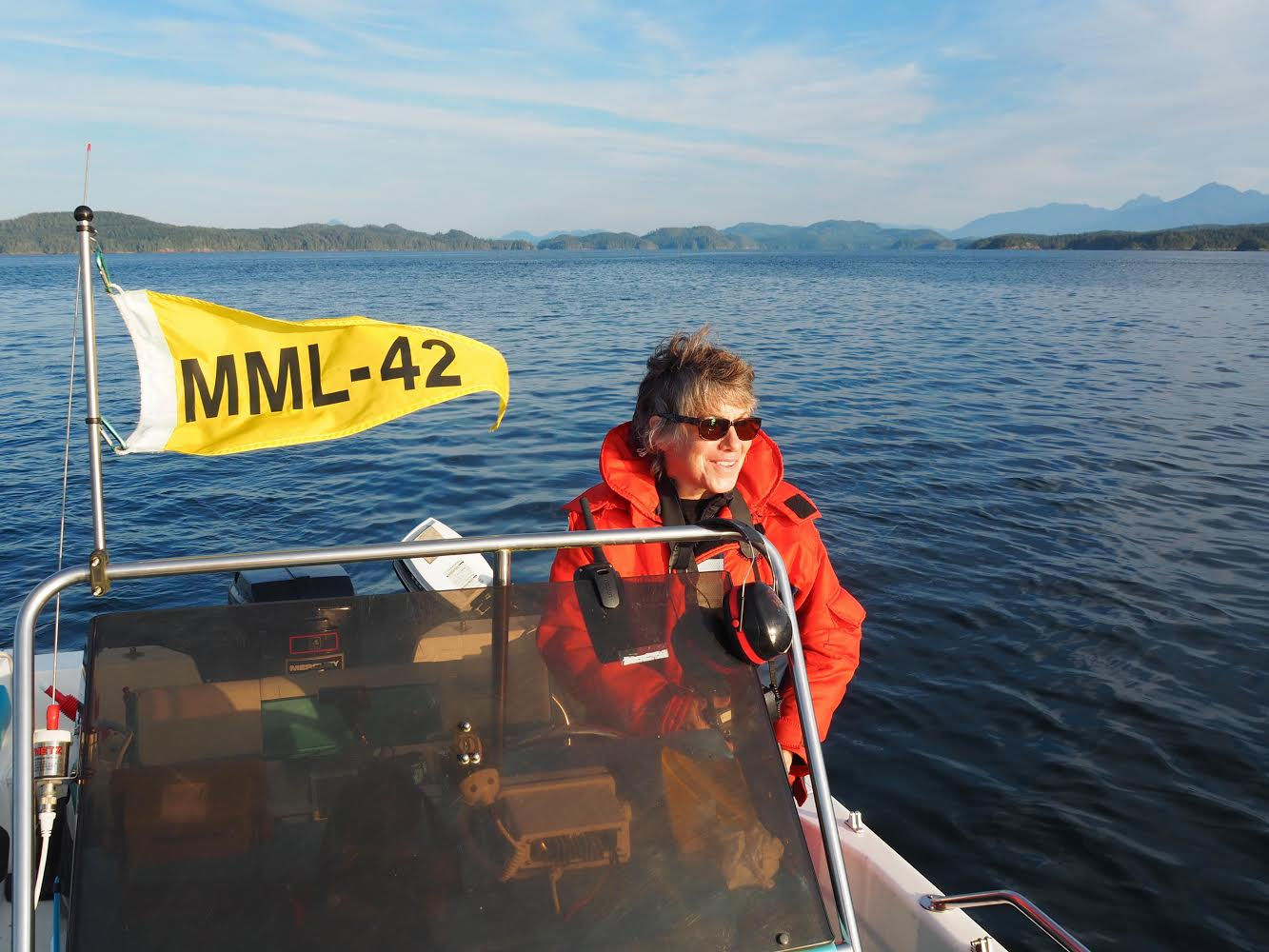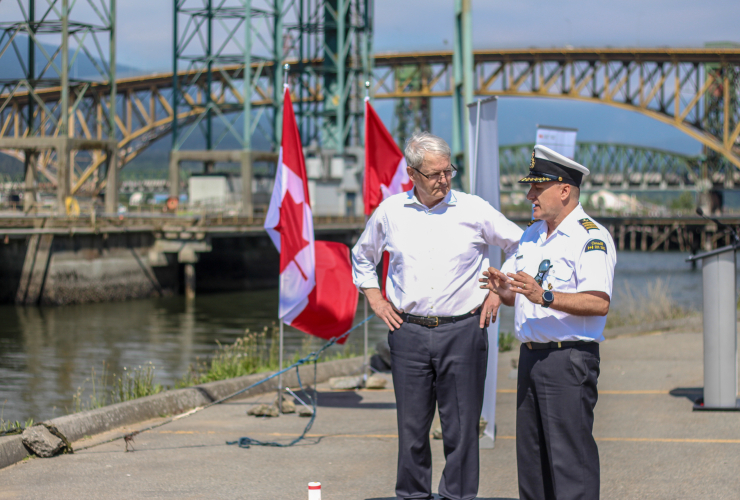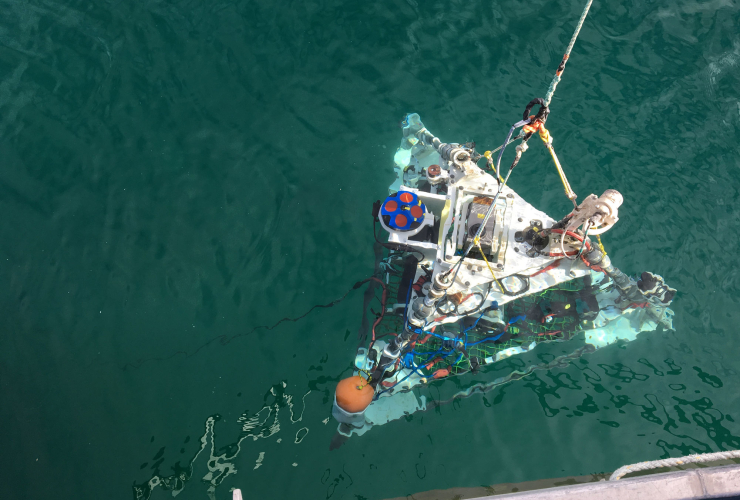Biology teacher and cold-water diver Jackie Hildering has been studying humpback whales in the “dark, life-sustaining waters of the Northeast Pacific Ocean" for the past 14 years.
She's thrilled that humpback whale populations have made a comeback over the last 60 years since international regulations were put in place to protect the toothless mammals, whose pre-legislation numbers dwindled due to whaling.
“We get a second chance with giants,” said Hildering, with wonder in her voice. According to the Pacific Whale Watch Association, which represents three dozen or so whale-watching companies in B.C. and Washington state, an estimated 21,000 humpbacks are now in the North Pacific, compared with just 1,400 when the whaling industry was closed in the mid-1960s. There are an estimated 2,145 humpbacks - excluding calves - that feed off the coast of British Columbia.
“We have this incredibly fortunate return."

But the return of these whales comes with new challenges for British Columbians. As humpback whales increase in number, their run-ins with boats off the B.C. coast have become more frequent, causing serious injuries to both whales and humans.
Hilderberg recently learned that on May 11, a humpback was spotted off the coast of B.C. near Whytecliff Park with a large, raw-looking gash on its back. That same whale had previously been photographed on April 6 with no visible injuries.
Experts say the whale was likely struck by a boat and its propeller.

National Observer reached out to Jessica Torode, coordinator of the BC Cetacean Sightings Network, for confirmation of the whale sighting.
“We didn't see the actual incident occur, so we can't confirm that it was a boat," said Torode. "But it does, to me, look like an injury caused by a boat.”
Torode said that it’s hard to gauge how serious the injury is because when whales die, their carcasses sink to the bottom of the ocean.
“It could be that this animal may recover. Or, he may die of sepsis,” explained Torode. “ We'll just be keeping an eye out for this individual to see how he recovers.”
In the meantime, there's little people can do about the injured whale. Hildering said there's, unfortunately, no way to rescue such big mammals - which can grow up to 50 feet in length - after a collision.
The danger to both whales and humans
Hildering, a co-founder of the Marine Education and Research Society, is now sounding the alarm that B.C.'s boaters need to be on the lookout for signs of humpbacks to avoid potential collisions. This isn't just to protect the whales, she said, but for boaters' personal safety as well.
“There are people who have been thrown from their boats. There are kayaks that we know have been flipped. There's even somebody who is a paraplegic on our Coast as a result of a collision with a whale,” warns Hildering, referring to Mike Hamill, a Delta man whose life was changed last June when his guided fishing boat struck a humpback near Haida Gwaii.
According to reports, his boat collided with a humpback that had surfaced for air. The collision sent Hamill flying through the air, landing on the console of the boat. Even though he was immediately flown to safety and went through an 11-hour surgery and a five-week stay at Vancouver General Hospital, the former fitness industry veteran had no feeling from his chest down. Hamill suffered damage to his spinal cord, a crushed pelvis, two broken clavicles, two broken scapulae and every rib in his back was broken after his boat collided with the whale.
Humpbacks are baleen whales and unlike their cousins, the toothed whales (orcas, dolphins), they don’t have bio sonar — also known as echolocation — to help them detect other creatures in the water. Instead of using echolocation for hunting and navigating, humpback whales tend to produce a series of 'songs' that are used for communicating.
“They can be astoundingly oblivious of boats sometimes,” said Hildering. She warns that because of this, boaters need to be extra aware of their surroundings, rather than assuming that whales will swerve out of their boat's path.
“[Humpback whales] dive for much longer. They're usually not going in one direction, because they're looking for food; They're big, and they can become suddenly acrobatic.”

A humpback is seen lunging for food near an aggregation of birds near Port St. Luis in California on August 22, 2012. A gathering of birds is a good sign that a humpback might be near. Photo By Michael L. Baird, flickr.bairdphotos.com
Hildering and her team created a campaign called ‘See a Blow, Go Slow’ in an effort to educated the public and potentially save the lives of both whales and humans.
Their campaign highlights key points to reduce a while strike, such as:
-
Boaters should always be on the lookout for blows, which can stretch up to two meters high.
-
A large gathering of birds on the water means that there is a large gathering of fish below the water, which indicates that a whale could be close by.
-
Slow down and keep distance. Make sure the boat goes no more than seven knots when near a humpback and maintains at least a 200-meter distance.
Lack of legislation around whale-boat collisions
In Canada, there is currently no law that requires a boater to report when they’ve struck a whale, and Hildering wants to change that.
“By having the incidents reported, we can better understand how often it can happen, what the repercussions are, [if] the whale survives," she said. "And there's a greater chance of resources being made available for enforcement and for education."
Hildering said anyone who goes on a boat should immediately program the DFO Incident Reporting Line phone number (1-800-465-4336) into their phones so they can call the number when a boat hits a whale.
For Hildering, who has dedicated the last decade of her life to this work, raising awareness of whales among boaters is worth the effort.
For her, this work is about “the pure privilege and magic" of being able a coastal British Columbian who can "look out and see whale blows go by.”
This article was updated at 10:00 am on May 18, 2018, to reflect that the humpback population estimates were for all the North Pacific and not just the Pacific Northwest. We also updated that the humpback whale in the collision with Mike Hamill's boat did not breach but surfaced for air.






Comments